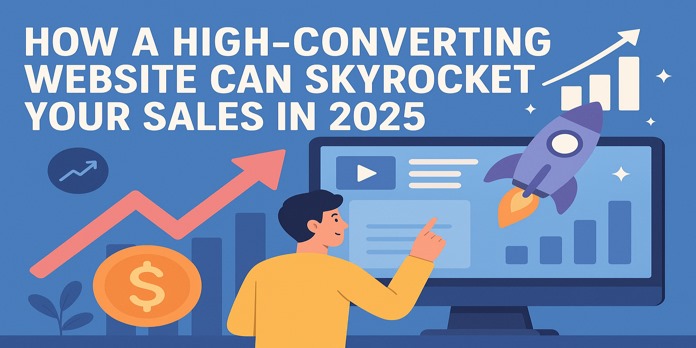Blog Detail
Referral Marketing: - Complete Guide
Referral Marketing
Oct 27 2017

Referral Marketing is the method of promoting products or services to new customers, primarily through word-of-mouth. Essentially, Referral Marketing takes a formal, strategic approach to capturing and enabling referrals through Refer-a-Friend campaigns, partnerships, or other means.
Introduction to Referral Marketing
Profitably acquiring customers is the key to any company’s success. Referral Marketing allows companies to get new customers by giving advertising directly to customers, rather than to third-party promotion platforms. Customer acquisition is the number one priority and the number one challenge for businesses today. This technique helps businesses to target potential customers who are not yet aware of the brand, or who may need an extra nudge from a friend in order to make that first purchase.
Why should I use Referral Marketing?
59 % of people consult friends and family for personal advice in making purchase decisions.
Purchasing behavior has been socially influenced since the beginning of time. Long before social networks like Facebook and Twitter kept you in the virtual loop, your physical network was having an impact on what you bought and where you bought it from. In fact, a referral is the most powerful way in driving new business — and in help, customers to decide what to purchase.
The Best Performing Marketing Channel
Referral has long been the most powerful force in driving new business and is the most trusted form of advertising. According to Nielsen, 84% of people trust product and brand recommendations from people they know4. Think about the last thing you bought online. How did you hear about it? What factors influenced your decision to buy? How did you feel after you made your purchase? If you heard about the product through a friend, chances are you felt pretty good about your purchase.
If you are comparing other marketing channels, referrals have the highest benefit and best conversion rate from prospect to purchase. They also have a higher lifetime value and better relationship with client. In fact, a referred customer is expected to have at least a 16% higher lifetime value than customers acquired through other means.
How to Formulate & Execute a Referral Marketing Program?
Here are some simple steps to guide you about how to formulate and execute a referral marketing program?
Step: - 1 Identify your objective
This may seem obvious, but this step is often overlooked. Is your goal to drive new customer signups? To get more reach (even if leads aren’t quite ready to convert)? To increase sales? Focus on measurable impact for your business. For example, if you are a hotel booking site, you may want to use referrals to generate repeat purchases due to the low repurchase rate in the industry. Or, if you are an online clothing company, you may want to use referrals mostly to get new customers because repeat purchase rate is high. A happy shopper will come back over and over again. On the other hand, if your business sells infant car seats, you might want to focus on increasing new sales (since a customer may only buy one car seat in their lifetime).
Step 2: - Define your target audience
As the old marketing adage goes, “Right person, right message, right time.” Ensuring the success of your referral offer hinges on your ability to precisely identify your target audience. Will you be targeting only paying customers? Or, will you also include advocates that haven’t yet purchased?
In addition to who you want to target, you should also be thinking about where you want to reach them. Depending on where the customer is on your site, you can capitalize on their mindset at different stages of their buying journey. If a lead comes to your site just to browse, you can serve them with an offer to share your product on Facebook, and give them an incentive of a smaller amount to do so. These smaller discounts might pay off in a big way, giving you stronger reach with your target audience. Know the audience and their needs and wants. Determine your referral incentives accordingly.
Step: - 3 Arriving at your referral incentive
- Designing your referral incentive
- Create a compelling offer. Think about what other offers are already out there in the marketplace. What are your competitors' offering, if anything? Your referral offer should be the most attractive out of all of your current promotions.
- Know your cost per acquisition (CPA). How much do you currently spend acquiring new customers, by channel?
- Weigh customer lifetime value over CPA. More referrals mean more rewards, which in turn leads to more purchases by the advocate.
- Determine your minimum order value. What is the minimum amount the friend needs to spend to earn the reward?
- Make sure your incentive fits with your brand image. If your brand doesn’t offer discounts, frame your incentive as a gift or store credit that is automatically applied upon checkout.
Step 4:- How to ask for a referral?
Asking your customers a direct question like, “Do you know someone else who might be interested in buying this product?” can make their mind draw a blank. Instead, establish that your customer is happy with your product and their experience. Then, offer them the referral incentive or offer you arrived at it. Try to reframe your referral offer as a way to help a friend.
- Make it Timely
The best time to ask for a referral is after a purchase or positive experience with your brand. Capitalize on these events. A Texas Tech study on “The Economics of Loyalty” found that 91% of people are at least somewhat comfortable providing a referral, yet only 29% actually refer. This clear disconnect means companies need to ask customers for referrals and provide them with a clear motivation and mechanism to do so.
- Make it Easy & Accessible
Regardless of how much a customer or advocate loves your brand, if you don’t make it easy for them to refer a friend, they will drop off. Implement an easy solution that requires less effort from the customer.
Step: - 5 Tracking, optimizing & converting
Be sure to track every site purchase and customer share to reward advocates and friends only when they meet your defined campaign criteria.
- Always Be Optimizing
A/B testing offers is a great way to measure what booms best with your target audience. When you A/B test offers, design experiments to identify key drivers that get people to share and get friends to click on the offer and convert. A/B testing an offer headline is low-hanging fruit that can have an immediate impact at the top of your funnel. The offer headline impacts both open and click rate, so it is an easy way to get two quick testing wins.
- Measure & Adjust
Leverage a dashboard of key referral indicators as a way to set goals and measure the success of your referral program and particular campaigns. Your referral partner should have a complete, aggregate view of your goal attainment and campaign performance.
In addition to tracking your referral activity, you should also record organic traffic growth and reviews/ratings. Measure the percentage of your daily visitors who share your site with others (your ‘viral coefficient’) 16. How is the word of your product being shared outside of your site? Know your Net Promoter Score, if you don’t already, and monitor it over time.
What happens if you find out users are exploiting your referral program?
A best-in-class referral technology provider can deter fraudulent behavior by preventing suspected violators from seeing the referral offer. It should also be able to identify fraud by using basic IP and cookie tracking, as well as supplemental fraud-detection algorithms. As a last resort, your partner should provide you with the option to cancel the transaction. Your provider should be able to tell you precisely how they identify and stop fraud. Beware of any referral marketing platform that insists fraud prevention is a ‘black box’ solution and doesn’t explicitly show you questionable transactions are identified.
Conclusion
People are 4 times more likely to buy when referred by a friend.
— Nielsen
Referral marketing programs leverage trust to provide greater ROI than other marketing channels and convert higher quality customers. From cognitive fluency to five types of social proof to better matching, we learned about why science makes referral marketing so effective.
So you’ve got the better idea about how referral marketing works and how to implement it. I hope you’ve liked it and share it with your friends.
TAGS
India +91 97265 89144, Dubai +971 544149632.
We truly care about our users and our product.






